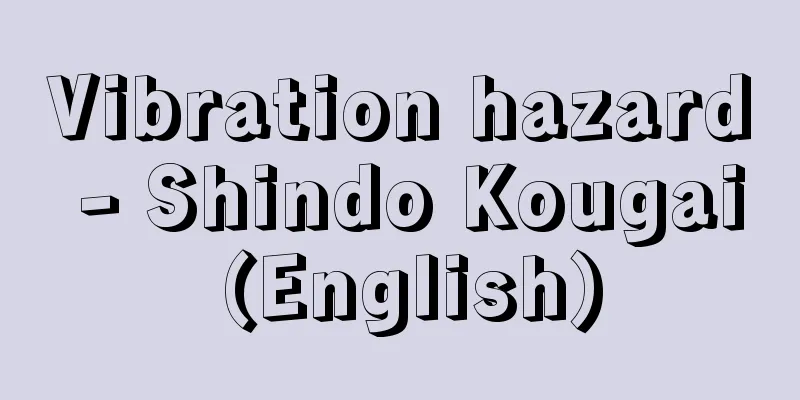Vibration hazard - Shindo Kougai (English)

|
Pollution caused by vibrations from factories, construction sites, railways, automobiles, etc. has been a problem since the 1960s. It is believed that low frequencies between 1 and 12 Hz cause the greatest damage. The damages include (1) anxiety and sleep disturbance, (2) interference with precision work, (3) physical damage such as cracks in walls, and (4) rattling noises from doors and paper screens. In the past, about 10,000 homes along the Shinkansen line experienced vibrations of 70 dB or more, which is equivalent to a magnitude 2 earthquake. Similar measurements have also been taken along major roads along automobile routes. Countermeasures include (1) consolidation of factories and other facilities by relocation, improvement of foundations, and switching to low-vibration equipment, (2) improvement of equipment and construction methods for construction work, and (3) improvement of driving methods such as speed limits and designation of traffic zones for automobiles, improvement of road pavement, and construction of vibration-proof buildings and review of urban planning. The establishment of laws and regulations lagged behind other areas, with the Vibration Control Law being enacted in 1976. The prefectural governor designated areas subject to regulation, dividing them into residential areas (Type 1 areas) and other areas (Type 2 areas), and stipulated regulatory standards for factories, business establishments, construction work, and automobiles. In fiscal 1990, approximately half of all cities, towns, and villages had designated areas. Furthermore, no recommendations for improvement were made to factories or other facilities, and administrative guidance was given in 266 cases. Source: Encyclopaedia Britannica Concise Encyclopedia About Encyclopaedia Britannica Concise Encyclopedia Information |
|
工場,建設工事,鉄道,自動車などの振動が引起す公害。 1960年代から問題にされるようになった。ことに1~12Hzの低周波が最も大きい被害を引起すと考えられている。被害の態様は,(1) 不安感や睡眠妨害,(2) 精密な作業の妨害,(3) 壁面の亀裂など物的損失,(4) 戸,障子などのがたがたいう音の発生などで,新幹線沿線ではかつて地震でいう震度2にあたる 70dB以上の住居が約1万戸あった。また自動車幹線沿道でも同様の実測結果がある。対策は,(1) 工場などでは移転による集団化や基礎の改良,低振動機器への転換,(2) 建設工事では機器,工法の改良,(3) 自動車では速度の制限,通行区分帯の指定など走行方法の改善,道路舗装の改良など,また家屋の防振構造化,都市計画の見直しなども考えられる。法令の整備は他に遅れて 76年,振動規制法が制定され,規制する地域を知事が定めて,住居地域 (第1種区域) とその他の地域 (第2種区域) に分け,工場,事業場など,建設工事,自動車のそれぞれについて規制基準などが定められている。 90年度では全市町村の約半数で地域指定が行われている。また工場などへの改善勧告はなく,行政指導が 266件行われた。
出典 ブリタニカ国際大百科事典 小項目事典ブリタニカ国際大百科事典 小項目事典について 情報 |
>>: Vibration meter - Shindo-kei
Recommend
Local taxes - Local taxes
A general term for taxes levied and collected by ...
Hyakinthos
A beautiful young man in Greek mythology. Born in ...
A Psalm of Life
He later became a professor of modern languages ...
Salsoda
…Sodium carbonate is commonly called washing soda...
Megaloptera
…The order Neuroptera is divided into three subor...
New leaf collection of waka poetry
A quasi-imperial anthology of waka poetry from th...
Isogawara (Isakagawara) tar spot
The name of a genus of small brown algae in the fa...
Ober Procroll - Ober Procroll
The Synod was modeled after the religious adminis...
Nieuwe Gids (English spelling)
However, it cannot be denied that the Netherlands...
crawfish
... In kanji, the large spiny lobster species is ...
Photo Gallery - Shashinkan
〘 noun 〙 A place that has a studio and takes pictu...
Essence - Essence (English spelling) essence
Essential oils are obtained by extracting the aro...
Jigami seller
In the Edo period, these peddlers traveled around ...
Mazaniero's Revolt - Mazaniero's Revolt
A popular revolt broke out in Naples in 1647 under...
Achilles - Achilleus
A hero in Greek mythology. He is the main charact...









